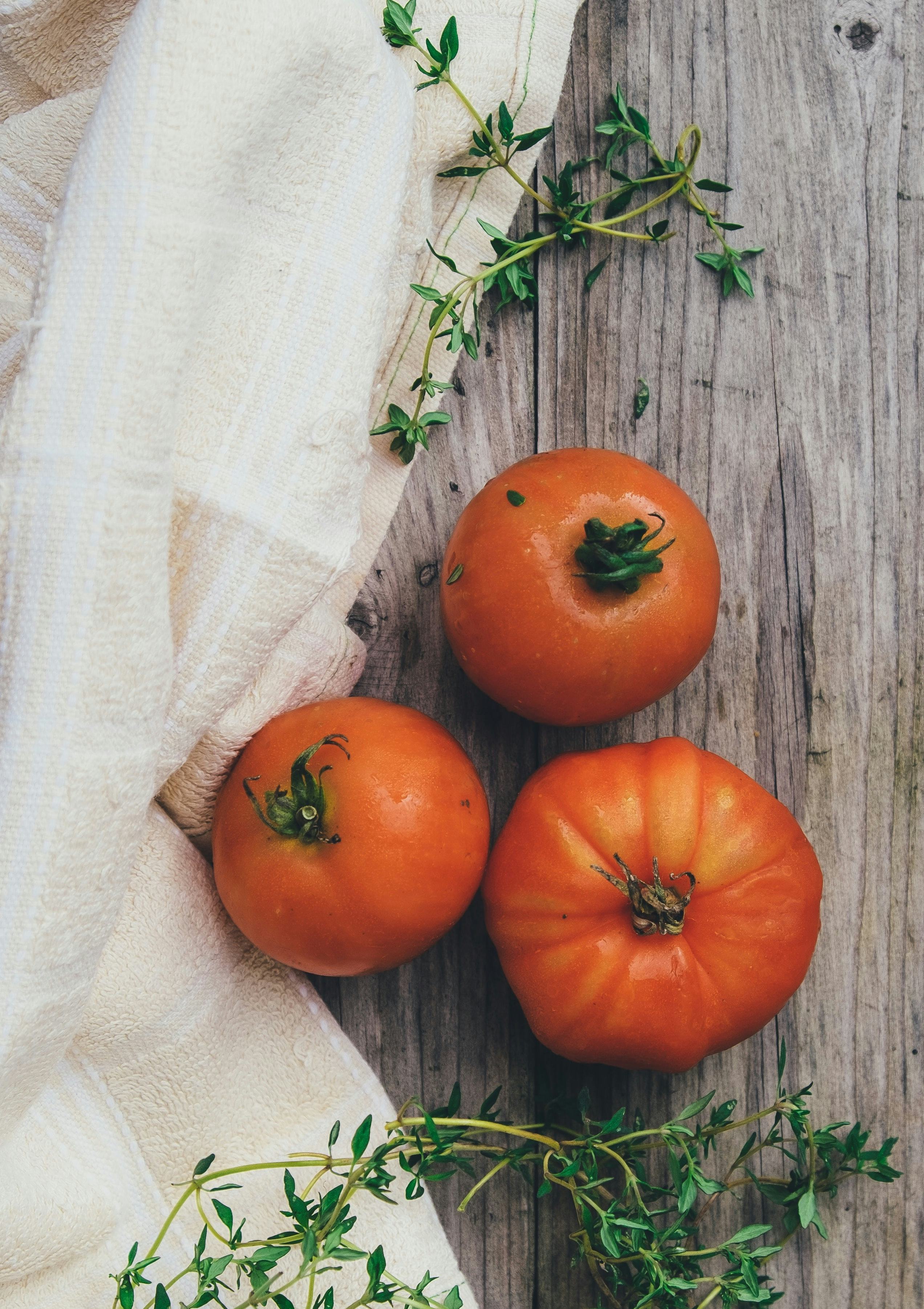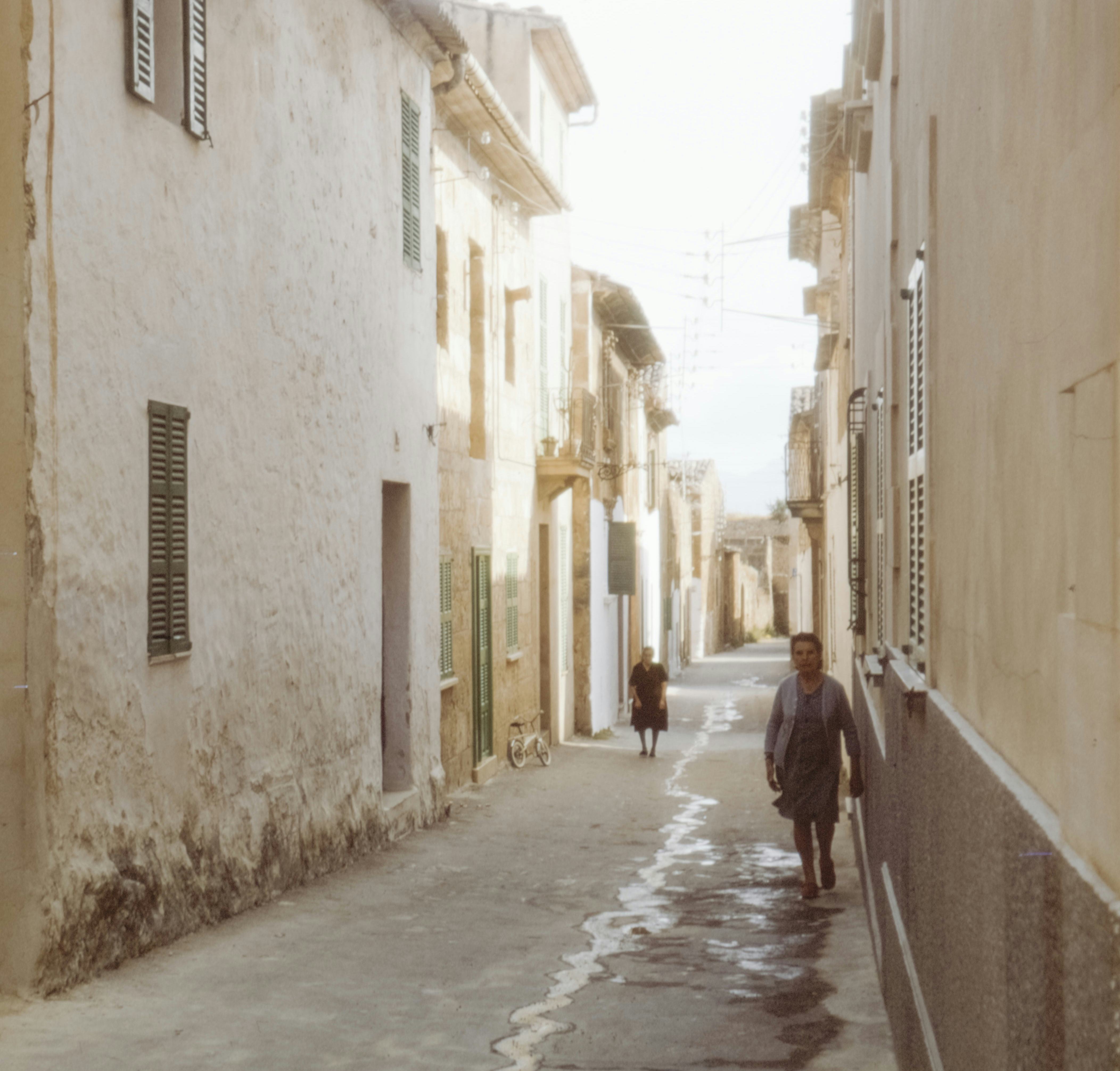What could she have wanted with all of those empty containers, so meticulously cleaned and stored so haphazardly around the house? Empty mayonnaise and pickle jars, aspirin bottles and prescription tubes, butter and sour cream tubs, cookie tins and coffee cans, brown paper bags and plastic sacks, piles and piles of shoeboxes? Of course, she had always been thrifty and detested waste, but what about, then, all of those opened yet barely touched bottles, boxes, and jars – the same brands, the same sizes – of instant coffee, catsup, mustard, brown sugar, spices, napkins, cleanser, toothpaste, mouthwash, dish, hand, and laundry soap that filled the cabinets and closets in the basement, kitchen, and bathrooms? (Their seals and tops broken and torn, their contents reaching almost to the brims, further evidence, surely, of the darkening forgetfulness that had overwhelmed my mother these last few years.)
All worthless even to the local food depository, and we tossed them out, along with the tattered magazines and yellowed newspapers, the canceled checks and the paid receipts, the expired policies and warranties, the used holiday wrappings and faded ribbons, the torn and soiled linens and rags, and so much else that was of little use to anyone, certainly not to my parents anymore.
But other possessions of theirs were far more difficult to discard, objects they had used so often to cook, sew, repair, or clean, but were now too flawed or worn to sell or to donate, and also so many keepsakes and knickknacks without worth other than the emotional value attached to them. Bric-a-brac, usually chipped or cracked, to commemorate anniversaries, birthdays, and Mother’s Days, and souvenirs from vacations in Puerto Rico and Florida and, before that, Atlantic City. There was so much personal memorabilia, too – snapshots, scattered and pasted in photo albums, of friends and relatives whose names and circumstances we could no longer place; invitations to weddings and prayer booklets from funerals; postcards, thank-you notes, and letters in indecipherable hands; deeds to property sold long ago; documents from public and private institutions certifying graduations and tax payments, exceptional service or generous contributions.
Neither Mom nor Dad would ever return to the house, but they were both still alive then, and my sister and I could sense their presence overlooking us – their horror and their powerless dismay – as we obliterated one memory after the next, buried them among the scraps of paper, fabric remnants, balls of yarn, and spoiled foodstuffs packed inside the black garbage bags that we hauled out to the curb for pick-up with the next day’s trash.
My wife and brother-in-law had joined us at the beginning of the weekend, but when they returned to work on Monday, my sister and I were left alone to inventory and dispose of the remainder of our parents’ possessions. While she continued to concentrate on the bedrooms and closets upstairs, packing and discarding the clothes they would no longer need, the blankets and sheets, the toiletries, cosmetics, and other bathroom supplies, I would clean out the kitchen.
One of our first tasks during the weekend had been to empty the side-by-side refrigerator of its perishables. But we had left the freezer compartment untouched, and it was still stacked throughout with small packets of food, each one wrapped in aluminum foil and then in clear plastic, a slip of paper inserted in between to identify the contents and the date the package had been frozen. The top two shelves were reserved for leftovers: individual hamburger patties, chicken legs, slices of roast beef, solitary blintzes, soft dinner rolls scavenged from a nearby diner. The shelves below held even smaller packets – some only pellets – that, to my surprise, preserved chicken fat, livers, and skin. It had been some time since my mother had last made the chopped chicken livers that usually preceded our holiday dinners, and because of her heart condition, she had ceased frying with animal fats years before.
Except for a carton of ice cream, water crystals lining its inside, and frozen bagels, the remaining space in the freezer was stacked with the kind of beef shanks and bones my mother had once used for soup, when she still had the desire and stamina to watch over a simmering stockpot for hours.
As I gathered the frozen packets together and disposed of them, I noticed that the earliest had been dated about four years previous, when my father first began to complain about my mother’s forgetfulness, and the latest from six months before, when we all finally understood that her chronic depression was returning in full force.
Along with crockery and dishware, the cupboards stretching above the stove and the countertops had overflowed with the empty containers and opened foodstuffs we had already discarded. More cabinets were built-in beneath the sink and countertops, and although I found an occasional open box of baking soda and soap powder there, they were filled primarily with the kinds of supermarket loss leaders my parents tended to buy in bulk: cans of tuna and condensed soups, jars of pickles and jams, paper towels and detergent. “At least I won’t have to throw these away,” I said to myself, as I packed them into the empty cartons we had brought for whatever we could salvage.
Just above these floor cabinets were a series of counter drawers. Those beneath the cutting board contained mostly silverware and cutlery, and after a preliminary screening and disposal of can openers, scissors, graters, peelers, knives, measuring cups, and other ancient implements too rusted, tarnished, or dulled to be of any value, I deposited the remainder on one of the countertops for my sister to sort out.
Only the two drawers beneath the counter next to the refrigerator now remained to be emptied, and I stared at them for several moments. Despite all the years I had lived in the house, I could retrieve no memory of what might be stored inside, and pulling the first one open, I found it to be stuffed with coupons clipped primarily from newspapers, magazines, or Sunday supplements. Many of them were for products I could not recall my parents ever buying, and the ones I glanced at were well beyond their expiration dates.
Toward the rear, yellowed and curling at their edges like the coupons, were labels bundled together with dry, stiff rubber bands that snapped as soon as they were stretched. Steamed from glass, cut from cartons, and stripped from tin, the labels were being saved, I imagined, to be redeemed for discounts or products, although some were for brands that, as far as I knew, no longer existed. Lining the bottom of the drawer were several Quick Saver books filled and half-filled with A&P plaid and S&H green trading stamps. “Did she think,” I wondered, “that some day they would come back and be worth a transistor radio, perhaps, or a pop-up toaster?”
The second drawer was also crammed with stacks of glossy and yellowed clippings. These were not coupons or labels, but rather recipes, hundreds of them, cut from the family magazines my mother once subscribed to and from the food sections of the daily newspapers. Behind them, wedged in so tightly I had to pry them loose to extend the drawer to its full length, were pamphlets and booklets filled with recipes prepared by the home economics departments of appliance companies and major food processors: Kellogg’s, Armour Meats, General Mills, Nabisco. Some had accompanied the pressure cookers, mixers, and blenders my mother had purchased over the years, and the others must have been received as premiums or in exchange for the same kinds of labels and coupons I had just thrown away.
From the graphics and the photos and even the ingredients, I concluded that most of the recipes dated from the years my sister and I were living in the house. Yet these were not the dishes my mother made most frequently, the ones we were accustomed to eating as children. Those recipes had been collected in a thick, leather-bound engagement book that my sister had already removed from the house. This was a book that I had used myself during long winter weekends when my mother decided to teach me how to bake a cake, or just before I left for college, when I wanted to learn how to recreate her chocolate-chip cookies or her beef stew. I recall having seen an occasional magazine or newspaper recipe – usually a simple one, baked chicken or pineapple upside-down cake - pasted inside. But most were family recipes, handed down by the women on my mother’s side, aunts and first cousins, many of whom were skilled and creative cooks. These were all in my mother’s handwriting, and I can still visualize her cornering one of my aunts during a bar mitzvah reception or a cousins’ club gathering, translating casual procedures – a smidgen of this, a scoop of that – into precise measurements.
Or sitting with my grandmother at our kitchen table after they’d made a batch of knishes or an apple sauce cake together, reviewing the ingredients and inscribing the proportions into her leather-bound bible. My grandmother was also an excellent cook, although she limited herself to traditional Eastern European Jewish cuisine and Old World methods. As long as she lived with us, the aroma of rendered chicken fat permeated the kitchen, and I can remember her rolling out sheets of strudel dough and raising them to the window, draped over her arms, to see if they were thin enough for the sunlight to sift through. One spring day I returned home early from elementary school to find a huge carp – soon to be transformed into gefilte fish – floundering in our basement sink.
We kept a kosher house when my grandmother was living with us, and under her direction a steady and predictable course of simple preparations appeared on our table. But Mom was not about to make her own cottage cheese from scratch or gut a fresh chicken every other week, and shortly after my grandmother died, variations began to slip into our standard diet. She would never attempt anything as drastic, say, as baking a ham or frying bacon, but I can remember early experiments with shrimp au gratin and beef stroganoff that were declared by my father to be inedible and were immediately removed from sight, to be frozen for another time when he would not be present.
My father scorned religion and he would order pork chops at a restaurant or a ham and cheese sandwich at a drugstore counter without giving it a thought. But he was also, as he constantly reminded Mom, a meat-and-potatoes man, someone with simple tastes, and therefore easy to please, and although the premise of this last statement was accurate, the conclusion was not.
The slightest alteration in a customary dish – a sweet pickle chopped into his meat loaf, a hint of sherry in his stew – would invariably be banned from our table after a single appearance, and although my mother continued to experiment for a time, she quickly learned to have a substitute on hand—a piece of roast beef, a leftover chicken leg – for the inevitable rejection. Eventually, except for those Fridays and Saturdays when my father worked late, we settled back into our usual routine of roast or baked chicken, standard meat loaf, brisket and beef stews, and, on occasion, hot dogs and beans, veal or lamb chops, minute or rib steaks. Wednesdays were devoted to cold cuts from the deli or tuna salad and stuffed eggs.
Most of our main dishes were invariably accompanied by potatoes (mashed, braised, baked, or bound with mayonnaise in a salad) and the few canned or frozen vegetables my father would tolerate: peas, green beans, corn. Even when we would dine out on Sundays – not so much as a pleasurable experience but to give my Mom, as he phrased it, “a break” – it would be to a diner or deli serving basic American or Jewish food or, when we were more financially secure, to a steakhouse. The one neighborhood Italian restaurant we occasionally visited fortunately did not object to serving my father his veal parmigiano without the tomato sauce and without the cheese.
It was early evening by the time my sister descended from the bedrooms with plenty of packing and discarding still left to be done, to be resumed the next day. While I made us both a cup of instant coffee, she sat down wearily at the kitchen table where, that same hour, we had eaten dinner together so often as a family. When I joined her, I also heaped a large part of our mother’s recipe collection in front of her.
“I think Mom and I made this once together,” she said, drawing a clipping from the pile. “Or something like it.” It was a pizza, concocted from Bisquick, Hunt’s tomato sauce, and Wesson salad oil.
“Not for Dad, you didn’t,” I said.
“No, of course not. I don’t think he ever tasted pizza in his life,” and we were both simultaneously struck by the fact that not only would he never have tolerated this processed American version of a pizza at our table, he had probably never sampled the authentic kind at a pizzeria, nor ever had one delivered from Pizza Hut or Domino’s, nor even had a frozen Totino’s or a Tombstone.
Nor - with the exception of my mother’s thoroughly domesticated version of spaghetti and meatballs and an occasional macaroni and cheese out of The Joy of Cooking -- had he ever eaten, as far as we knew, any other Italian pasta or primo: no ravioli, no manicotti, no lasagna, no risotto, let alone anything as exotic as gnocchi or polenta. Despite the fact he’d lived in Philadelphia all of his life, we had never seen him eat a hoagie or a grinder or an Italian meatball sandwich, or even a cheese steak. Never a gyros or souvlaki or a falafel sandwich or anything else from the eastern Mediterranean – humus, baklava, stuffed grape leaves, couscous, or babaganoush. Mom occasionally brought home Chinese takeout – the usual egg rolls, chow mein, and fried rice – but never when he was present, and we had never known him to sample anything that could be considered Asian or, for that matter, from the entire southern hemisphere. Nothing that would be typically seasoned with soy or hoisin sauce, with chili peppers or curry, with mole or cilantro, with saffron or lemongrass. Occasionally – when we were at the shore or at a popular fish house where decent red meat was unavailable – he would order crab cakes, but nothing else without a spine, certainly no clams or oysters, and nothing that swam in the seas or the inland waterways unless it had been canned, pickled, or smoked. In later years, my parents had sometimes driven down the East Coast with my uncle and aunt to vacation in Florida, but I am certain that, along the way, he never willingly ordered any hush puppies or grits, country ham or barbecue, gumbo or she crab soup, or pompano or Key lime pie once they had arrived in Miami.
In later years, my wife and I took my mother out to French restaurants several times on her birthday. Much to our relief, Dad always declined to join us, since he would have nothing to do with any sauce that wasn’t a gravy or didn’t flow from a ketchup bottle. He scorned the judgment of gourmets and wine connoisseurs, and other than a legendary “dago red” he had been forced to swallow at an Italian girl friend’s house in the days before he met my Mom, he never drank wine, neither the sparkling variety served at weddings nor the cloying liquor served at Passover. He never snacked on Fritos, Doritos, or microwave popcorn, and although he ate hamburgers, I don’t think he ever had a Big Mac, a Whopper, or a White Castle slider, or had ever been inside a Wendy’s, a Big Boy’s, a KFC, or even a Dunkin’ Donuts.
I know that I’m being unfair and narrow myself, and that some of the foods my father enjoyed – beef borscht, sour tomatoes, fried matzoh – would seem foreign and exotic to many Americans not raised near an urban center where Eastern European Jews settled. I’m sure, too, that he shared many of the preferences and biases of the generation that came of age in the years between the World Wars. And, of course, I recognize that the eating habits of millions of Americans are controlled and limited by cultural traditions, regional tastes, financial considerations, health restrictions, ethical concerns, and religious fiat. But except for the first, none of these factors mattered to my father, and my sister and I were both sorrowed and angered by his rigid intransigence in the face of so much bounty and his destructive belligerence when confronted with anything new or unexpected on the table.
“Broccoli,” said my sister, as we continued our litany of the foods we had never seen him eat or he had brutally rejected in our presence.
“As well as cauliflower,” I said, “and all the other crucifers.”
“Vegetables are too easy. It would save time just to name the ones he liked.”
“Potatoes.”
“Well, after all,” she said, smiling, “he is a meat-and-potatoes man.”
“Oh, yeah? How about beef liver and kidneys? Not to mention sweetbreads and tripe.”
“Come on! I’ll bet you don’t eat those things yourself.”
“Ok. Duck, goose, pheasant, squab, partridge, quail, and that’s only poultry. Remember the time Mom tried to serve Rock Cornish game hen?”
“Stuffed with cherries, no less. But he eats chicken and turkey.”
“Not the white meat,” I reminded her.
“No,” she said softly, no longer smiling, “not the white meat,” and we both recalled our last Thanksgiving dinner in that house, a decade previous. My sister and I had liberated the turkey from my mother’s usual long, slow dehydration, searing it first under high heat, then rotating it several times and basting it frequently to ensure a moist, flavorful bird. We could not persuade my father to try a slice from the breast, but my mother was impressed by the freshness and texture of the meat. Giving her full credit for the success, all of us—my wife, brother-in-law, sister, nephews—praised her for one dish after another, until my father exploded in wrath. Enraged by all the fuss, he declared emphatically that the meat should rather be falling off the bone as it always had in the past, and instead of being perfect, his drumstick was perfectly inedible no matter how much gravy he poured over it. We returned the legs and thighs to the oven, firing them up beneath the broiler, but they were still not cooked to his satisfaction, and he even refused to taste the pumpkin pie my sister made from scratch, settling instead for the last few scoops of vanilla ice cream remaining in the carton from the night before.
“So what then were all these about?” my sister asked, sifting through the ancient recipes and recipe booklets heaped up between us.
“Fridays, perhaps?” I suggested. “And Saturdays?”
On these weekend nights before he retired, my father usually worked late, eating dinner at “the Greeks,” a rundown diner up-the-street from his store, serving, despite its ownership, distinctly un-Mediterranean fare. Our dinners at home, however, would consist of tuna and mushroom-soup casseroles or fish chowder or creamed ham over biscuits or some other such concoction that would have been foolhardy to place in front of Dad. My sister, a few years older than I, would often be absent -- on a date or at some high-school function—and since my Mom and I would eat these meals alone together, there would usually be leftovers for the following night or for a Saturday afternoon lunch. Sometimes I helped with the preparation, if only to open a can or chop some onions, and if we were both well satisfied, the recipe might even be promoted into my mother’s leather-bound collection.
“But I can’t remember any of these,” I said shuffling the cuttings and panphlets together, retrieving those few that had dropped to the floor, “although . . .”
Although they still had much in common with the meals we shared on those fatherless Friday and Saturday evenings. Originating from the kitchens and laboratories of food conglomerates, many of the recipes depended on branded ingredients, offering a multitude of ways that Miracle Whip and Rice Krispies and Junket puddings could be put to use beyond the obvious. But others were based on ingredients that as far as I could recall never found their way into our pantry, products such as Cinderella Raisins, My-T-Fine Desserts, Merkel Meats, Delrich margarine. Still others depended for their success on appliances we never owned from companies I’d never heard of: MicroMatic, Presto Cookware, Club Aluminum.
Concentrated soups from Campbell’s and condiments from Heinz appeared frequently, contributing to casseroles of every sort, many of them bound or extended with an instant starch—tapioca, flaked potatoes, bread crumbs, Minute Rice—and occasionally topped with wheat germ, crushed corn chips, or vacuum-sealed, dried, French-fried onions. There were innumerable uses for canned salmon and tuna, chipped and ground beef, leftover ham, chicken, or turkey, all of which could be formed into entrée rolls, molds, loaves, and croquettes, scalloped, hashed, curried, and creamed, and served over toast points or noodles or corn bread. There were “American” chop sueys, “American” sukiyakis, and “American” souffles as well as “mock” versions of American classics: mock lobster bisque, mock brown betty, mock Indian pudding, and, of course (from the back of the Ritz cracker carton) mock apple pie. There were vegetable aspics and seafood cocktails and sunshine salads and jellied molds and jellied rings filled with meatballs, melon balls, or Vienna sausage. There were all sorts of mixed marriages – tuna taters, chicken shortbreads, fruit salad puddings -- as well as dessert cakes with mayonnaise, sauerkraut, or cream of tomato soup serving as essential ingredients. Frozen pastry crusts were filled with anything that could be emulsified into a cream, and there were cheese dreams, succotash medleys, peach surprises, chocolate specials, peanut butter delights, along with ambrosias, rhapsodies, bonanzas, paradises, and joys.
“All this is making me pretty hungry,” I said. “Care for an American cheese sandwich on Wonder bread?”
“That’s not funny,” replied my sister, who knew I was referring to the paralyzing anxiety my mother had exposed to us a few weeks previous, when she was unable to prepare a simple lunch for my father – an American cheese sandwich on white bread and a glass of milk – until we showed her how to do it, step-by-step, over and over again.
By then, my father had already lost most of his vision and could hardly look after the preparation of his meals even if had wanted to make the effort. And Mom, my sister and I both eventually realized, preferred to believe she was shopping for groceries and cooking my father’s dinners rather than actually doing it, and by the time we obtained a court order to force him into the hospital, he had lost seventy pounds and was suffering from malnutrition and severe dehydration.
“Toss them,” said my sister. “Toss them all, and let’s get out of here,” and I did as I was told.
We would visit my father that evening. By then, he had probably had his dinner, although he had not yet been put to bed. Since he had developed severe digestive problems—due primarily to his prolonged deprivation—he was limited to soft foods: purees and jellies, yoghurts and whips. It all looked fairly unappetizing to us, and we preferred not to visit him during mealtimes. But perhaps because of his blindness or the gradual loss of his ability to taste or his bout with starvation or maybe because he often thought he was in a restaurant where someone else was paying the bill, he ate the bland and unfamiliar diet without complaint and often with considerable appetite.
My mother was in far better physical health and lived nearby, under much less supervision. Yet although she needed only to request a staff member to walk with her the hundred or so yards down the hill to see my father, she refused to visit him unless accompanied by my sister or another family member, fearful, she said, that she would be abandoned there and unable to find her way back.
There was a central kitchen where my mother lived, and the residents could use it to prepare snacks or even to bake cookies. But Mom, like most of her neighbors, preferred to be served her meals in the common dining hall. Still, the nurses informed us, she frequently refused to leave her room in the morning, remaining there for hours, sitting on the bed trembling, terrified because she didn’t know what to buy at the grocery store or what to serve my father that night for his dinner.
*
This essay first appeared in Crab Orchard Review, Spring/Summer 2003 and received the 2003 Illinois Arts Council Award for Creative Nonfiction.
J. Weintraub's fiction, poetry, and essays have appeared in all sports of literary places, from The Massachusetts Review to Modern Philology. As a member of the Dramatists Guild, he has had short plays produced throughout the world, and as a translator, he has introduced the Italian horror writer Nicola Lombardi to the English-speaking public. In addition, his annotated translation of Eugène Briffault’s Paris à table: 1846 was published by Oxford University Press in 2018. Learn more on his website.
Discover more from J. Weintraub.









